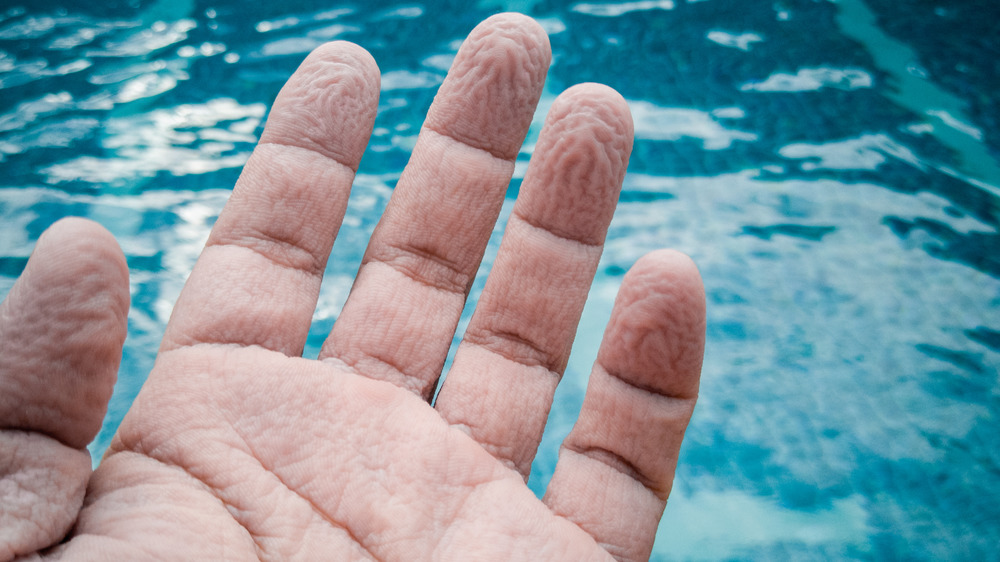It is thought that human hands and feet are the only human body parts that wrinkle after an extended time in the water because they have the thickest layer of dead keratin protein cells which absorb water

Why do our hands and feet wrinkle in water?
 Image Source: Health Digest
Image Source: Health Digest
Have you ever wondered why your hands and feet wrinkle after spending an extended time in the water? It’s a fascinating phenomenon that has puzzled scientists and researchers for quite some time. However, a prevailing theory suggests that the reason behind this wrinkling is due to the thickest layer of dead keratin cells present in our hands and feet, which tend to absorb water. Let’s dive deeper into this subject and explore the science behind it.
Providing a Firm Grip
Our hands and feet serve essential functions, enabling us to grasp objects, walk, run, and perform intricate tasks. To fulfill these roles efficiently, the skin on our hands and feet is slightly different from the rest of our body. It possesses a thicker layer of dead keratin cells, a tough and flexible protein, which forms the outer layer of our skin. This dense layer acts as a protective barrier and is responsible for the firm and flexible texture of our hands and feet.
The Water Absorption Process
When we expose our hands and feet to water for an extended period, such as during a long bath or swimming session, the outer layer of dead keratin cells absorbs the water. This absorption happens due to the hydrophilic properties of keratin. As moisture infuses into these thick layers, it causes the dead cells to swell and expands, leading to our skin wrinkling temporarily.
The Evolutionary Advantage
Now, you might be wondering why our bodies have evolved in such a way that our hands and feet wrinkle when in contact with water. Surprisingly, this wrinkling effect isn’t a mere random reaction; it has an evolutionary purpose behind it. Recent studies suggest that this wrinkling may help us gain a better grip on wet surfaces.
The formation of these wrinkles acts as a built-in traction mechanism, enhancing our ability to handle and manipulate objects underwater or even in wet environments. This unique feature might have played a crucial role in our ancestors’ survival by enabling them to navigate through wet terrains more effectively.
The Link to Our Nervous System
Researchers have also discovered an intriguing connection between the wrinkling of hands and feet and our nervous system. It has been observed that individuals with nerve damage or certain neurological conditions do not experience the same wrinkling effect. This finding suggests that our autonomic nervous system, which controls involuntary bodily functions, plays a role in triggering this phenomenon.
According to this theory, our nervous system initiates the constriction of blood vessels beneath the skin’s surface, causing the overall wrinkling effect. It is still a topic of further scientific investigation to understand the complete mechanism behind this intriguing link.
 Image Source: English Learn Site
Image Source: English Learn Site
In conclusion, the wrinkling of our hands and feet after prolonged exposure to water is a fascinating phenomenon that serves a purpose. Due to the thickness of the dead keratin cells in these body parts, they absorb water, causing the skin to temporarily wrinkle. This physiological reaction may have evolved to provide us with a better grip on wet surfaces, which could have played a significant role in our ancestors’ survival. The connection between our nervous system and this wrinkling effect adds another layer of complexity to this intriguing topic. Next time you notice your hands and feet wrinkling in the water, you can marvel at the wonders of our evolutionary biology.
Tags
Share
Related Posts
Quick Links
Legal Stuff

